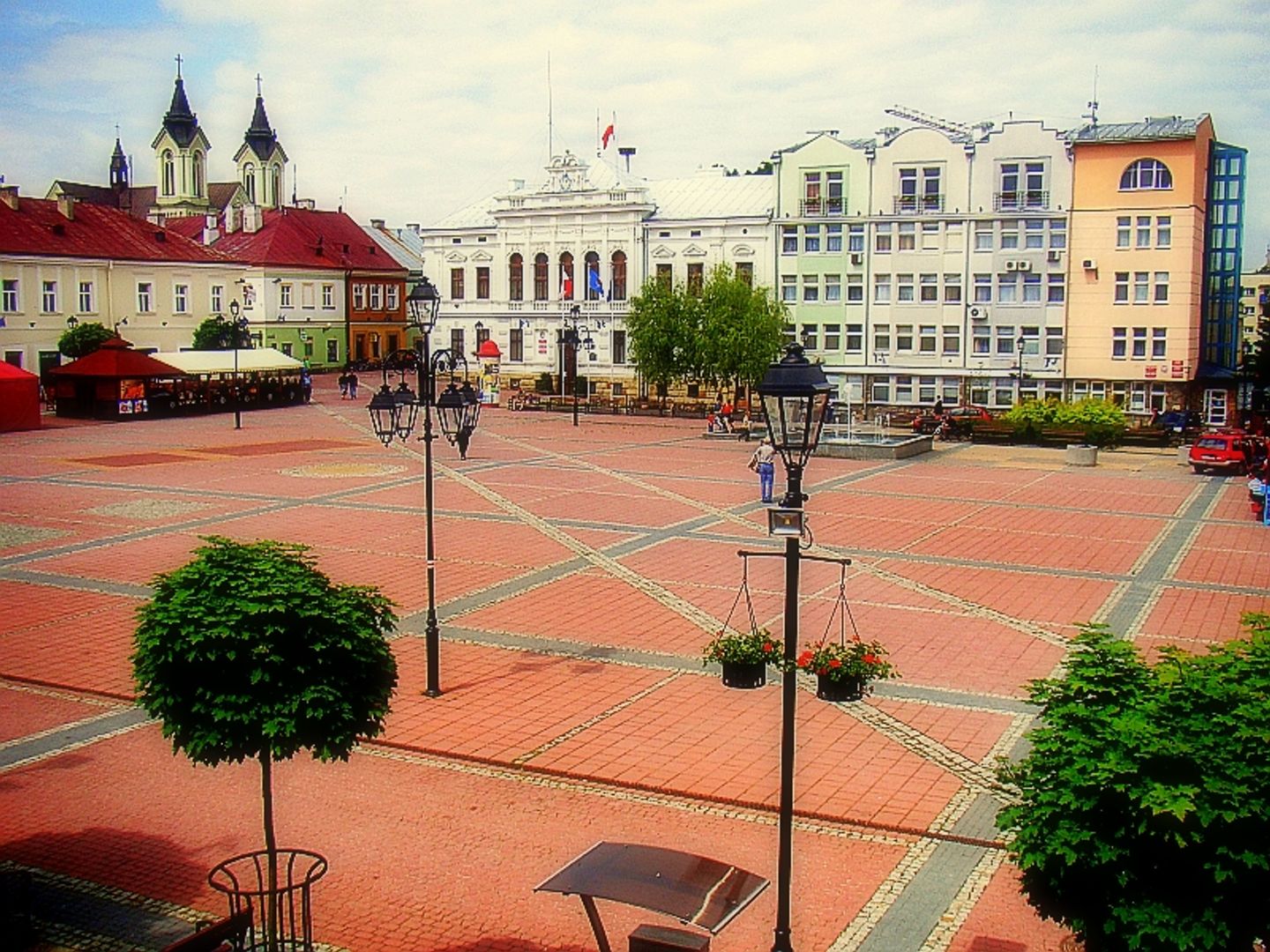Sanok Market Square
6.19

Overview
Sanok Market Square, established in 1786 by the Austrian authorities, has its roots in a 14th-century urban layout dating back to the city's founding. It originally measured 20 by 20 rods (81 m x 81 m) and for centuries served both economic and military functions, hosting markets and fairs. The townhouses surrounding the square were built in the 18th and 19th centuries, many of which housed inns, often owned by members of the Jewish community.
In the 19th century, the square was known as Plac Misjonalny (Mission Square), and during World War II, it was renamed Ringplatz and later Adolf Hitler Platz. In the Polish People's Republic, it was called Plac Rewolucji Październikowej (October Revolution Square) and housed the main bus station. In 1989, its original name was restored.
Commonly referred to as the "Large Market," the square now measures 100 m per side and retains its medieval architectural tradition. Notable buildings include an eclectic town hall from the turn of the 20th century and a Franciscan church from 1886. Between 2005 and 2007, the square underwent extensive renovation, which included modernizing its infrastructure and restoring historical elements, such as the outline of the former town hall visible in the cobblestones.
The square features numerous historic buildings, including a townhouse at number 10 that once served as a synagogue, as well as other buildings with rich social and cultural histories. It has also been a site for public events, including military oaths. Several benches commemorating Sanok writers, such as Kalman Segal and Marian Pankowski, highlight its cultural significance. In 2012, a monument dedicated to Zdzisław Beksiński, a renowned Sanok artist, was unveiled.
Today, the square offers free Wi-Fi, blending historical charm with modern amenities. Sanok Market Square is not only a commercial and economic hub but also a space rich in history, architecture, and culture, reflecting the region’s diverse heritage.
Location
2025 Wizytor | All Rights Reserved